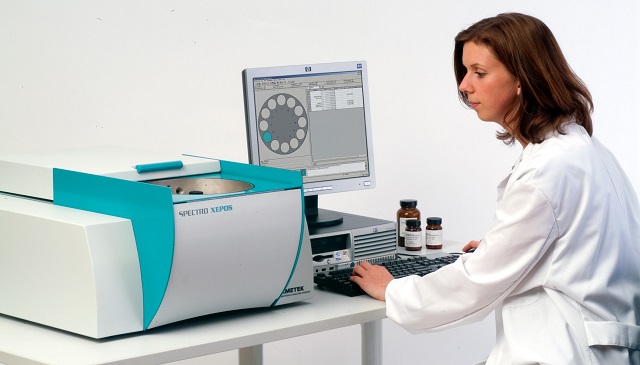SPECTRO plans to present an elemental screening package for the cement industry at the seventh Global CemFuels Conference, March 11 to 14, 2013 in Istanbul.

X-ray fluorescence analysis (XRF) has become especially useful for determining harmful substances in secondary fuels and has become a favorite technology, because of its ability to rapidly conduct screening analyses for many relevant elements.
Use of secondary fuels by the cement industry is continually on the increase. On one hand, the fuels are alternatives to traditional fossil fuels, such as petroleum and hard coal; while, on the other hand, cement plants have the ability to process problematic fuels, such as paints and varnishes, safely and cleanly.
The rotary kilns used in cement plants typically are heated to temperatures of ~1,500 degrees Celsius. At those temperatures, all harmful organic substances are destroyed. Within the cement industry, use of secondary fuels occurs more frequently than even energy recovery, and secondary fuels also provide some of the materials that later need to be added to cement when it is fired with oil and coal.
“Although high temperatures in cement ovens make short work of many harmful substances, it is important to note that cement plants often determine not just the calorific value of their secondary fuels, but also frequently analyze for trace elements as well,” emphasizes Dirk Wissmann, XRF expert at SPECTRO. “Otherwise, harmful inorganic substances could be introduced into the product, and the limiting values for the cement product and the exhaust air may be exceeded.”
In addition to chlorine, elements such as antimony, barium, lead, cadmium, chromium, cobalt, copper, molybdenum, nickel, mercury, zinc and tin are considered critical.
Sample Preparation and Automatic Matrix Correction
The analysis of secondary fuels can be particularly difficult, because fuels are frequently heterogeneous. One charge of waste wood may be completely uncontaminated, while another may be treated with chemicals containing heavy metals. For that reason, a large portion of the package of methods being introduced by SPECTRO at the Global CemFuels Conference deals with how to take and prepare representative samples. Another portion of the package covers subjects relevant to XRF technology.
Among the difficulties in analyzing secondary fuels is that the sample matrix often is unknown. The matrix, however, has a large influence on the measured intensities, and, if these so-called matrix effects are not corrected for, there may be high deviations in the measured values. For that reason, SPECTRO considered the needs of the cement industry in developing its TurboQuant software, which automatically determines the matrix effects, resulting in significantly improved accuracy. The determination of all of the relevant elements in a single measurement, while simultaneously measuring high and low contents, is another key advantage of XRF technology.
SPECTRO already has supplied numerous cement plants with XRF instruments. Typically, its compact benchtop SPECTRO XEPOS has been used, and a package of methods for the cement industry is available for that instrument. SPECTRO also will incorporate the needs and concerns of the cement industry in future versions of the instrument along with its entire line of XRF instruments.